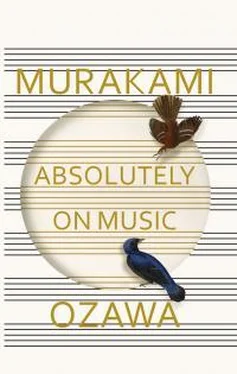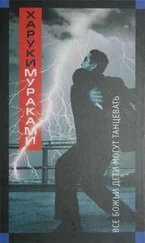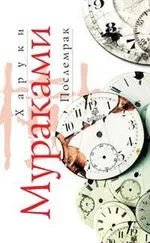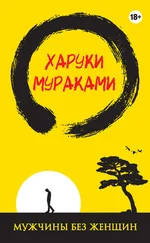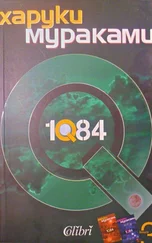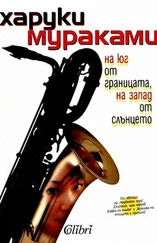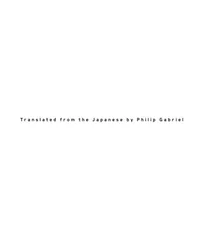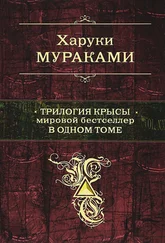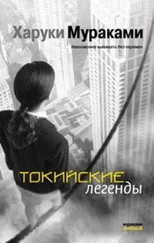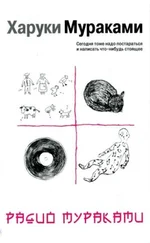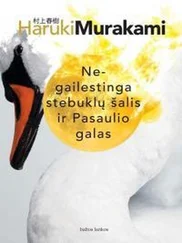For example, after he had listened to the first movement of the Ravel quartet, he said, “Thank you. That was a wonderful performance. Quite well done. But”—and here he grinned—“I didn’t like it at all.” Everyone in the classroom laughed, but I’m sure the performers themselves didn’t feel like laughing. I knew what he meant, though. The music they were playing still didn’t really sound like Ravel. It didn’t create true musical empathy. That was clear to me, and it must have been clear to the others in the room. Robert Mann had simply stated that fact honestly, directly, without sugar coating. It was an extremely important fact, because there was not enough time available to indulge in pointless euphemisms—not enough time for the students and not enough time for Robert Mann. In effect, he was performing the function of the bright, precise mirror of a dentist, a mirror meant not to blur and flatter but to focus directly on the affected area and bring out the problem. I had the feeling that only someone like Mann could carry this off.
Mann provided detailed guidance on the smallest matters, as if tightening all the screws of a machine. His advice was always very concrete, his intentions perfectly clear to everyone. He avoided all ambiguity, so as to make maximum use of the limited time available. The students clung desperately to every word of Mann’s rapid-fire advice. His guidance continued for more than half an hour—a very tense, even suffocating, half hour. The students must have been worn out by the end of it, but Mann—who was then ninety-two years old—must have been exhausted too. When he spoke about the music, however, Mann’s eyes were lively and youthful, not the eyes of an old man.
The Ravel I heard at the Geneva concert a few days later was a marvelous performance, almost unrecognizably so in comparison with the rehearsal. It practically dripped with that special beauty found only in Ravel. Yes, every last screw had been tightened as needed. The race with time had been won. Of course, it was not a perfect performance. There was still room for a deeper maturation. But it definitely had that sense of urgency that has to flow through all genuinely “good music.” More than anything, what it had was an earnest, youthful joy. The last membrane had been stripped off.
The students had, then, learned a great deal and had grown in little more than a week. And having witnessed the transition, I felt that I, too, had learned much and grown. This was true not only in the case of the Ravel. Listening to each of the six groups performing in the concert hall, I came to feel that there was something they all shared to a greater or lesser degree. It was something heartwarming and, quite simply, moving.
The same could be said about the orchestra—which is made up of the entire student body and is conducted by Ozawa—the centripetal force of which increased daily. At one point all of a sudden, like a stalled engine catching fire, they began to exhibit an autonomous sort of movement, like a single community. I felt almost as if I were witnessing the birth of a new kind of animal into a world of darkness. Each day they got better at moving their limbs and tail, their ears and eyes, and utilizing their senses. Their initial confusion gave way to increasingly natural movements executed with genuine grace and beauty. It was as if the animal had begun to understand instinctively what kind of sounds Ozawa had in mind, what kind of rhythms he was looking for. He was not so much training them as he was using a special kind of communication to elicit empathy from them … and, as a result, they were beginning to discover in that act of communication the rich meaning and natural joy of music.
Ozawa, of course, gave detailed instructions to the orchestra regarding each part of the composition—on tempo, dynamics, timbre, bowing—and he repeated the same passage over and over again until he was satisfied, as if making minute adjustments on a precision instrument. He did not issue his instructions as orders but rather as proposals: “Why don’t we try it like this?” he would say. He’d tell a little joke, and everyone would laugh, and the tension would ease a little, but his sense of the music remained a constant. There was no room for compromise. The jokes were just jokes.
I had no trouble understanding each of Ozawa’s instructions to the orchestra members, but I was simply incapable of seeing the connection between these small, concrete instructions and the overall shape of the music. How did these many little orders accumulate in such a way to create something so vivid, so that the sound and direction of the music became something shared by everyone? This was a kind of black box for me. How was it even possible?
Surely this was one of Seiji Ozawa’s “professional secrets”—the secrets of a man who had been active as one of the world’s great conductors for over half a century. Or maybe not. Maybe it was not a secret or a black box or anything of the sort. Maybe it was something that was obvious to anyone but which only Seiji Ozawa could actually do. Whatever it might be, all I knew was that it was really and truly magical. The two things needed for “good music” to come into being were, first of all, a spark, and secondly, magic. If either was missing, “good music” wouldn’t happen.
This was one of the things I learned in that little Swiss town.
The first concert took place in Geneva’s Victoria Hall on July 3rd, and the second (and final) concert took place on July 6th in Paris’s Salle Gaveau. In spite of the rather austere program (chamber music and a student string orchestra), both were sold out. Of course, most people were there to see Seiji Ozawa. And no wonder: it had been six months since he last took the podium, at the Carnegie Hall concert.
The first half of the program consisted of performances by the six string quartets, each playing one movement of the compositions they had studied. The second half began with the Mendelssohn String Octet, and then the full orchestra took the stage. Robert Mann conducted the Beethoven, making truly beautiful music. Next, Seiji Ozawa conducted the Mozart and the Tchaikovsky encore.
Both concerts were wonderful and memorable, the quality of playing extremely high and deeply felt. The music was played with real urgency, but it was nevertheless spontaneous and filled with pure joy. The young players gave everything they had on stage, and the results were truly superb. The concluding Tchaikovsky, especially, was the hit of the evening, filled with an emotional, limpid beauty. Everyone in the hall was on their feet at the end, applauding endlessly. The response of the Paris audience was especially intense.
Much of the applause, to be sure, came from music fans eager to encourage Seiji Ozawa in his successful comeback. Ozawa has long had many fans in Paris. The applause, too, was undoubtedly meant in part as praise for the student orchestra’s outstanding efforts, which far surpassed anything normally expected of a “student orchestra.” But quite simply, as well, what we were hearing was the pure, unstinting, heartfelt applause for genuine “good music.” It didn’t matter who had conducted or who had performed. They had produced unmistakable “good music,” with that indispensable spark and magic.
When I spoke with some of the students after the concert, before their excitement had cooled, they said things such as “The tears were pouring out of me during the performance” and “I’m pretty sure you don’t get to have too many experiences this amazing in one lifetime.” Seeing them so deeply moved, and seeing the audience’s feverish reaction, I began to grasp how Ozawa felt pouring his heart and soul into the activities of this academy. Nothing could ever take its place for him. To hand genuine “good music” on to the next generation; to convey that intense feeling; to stir the hearts of young musicians in such a pure and fundamental manner: these surely gave him a joy that was fully as profound as that to be gained from conducting such world-class orchestras as the Boston Symphony and the Vienna Philharmonic.
Читать дальше
